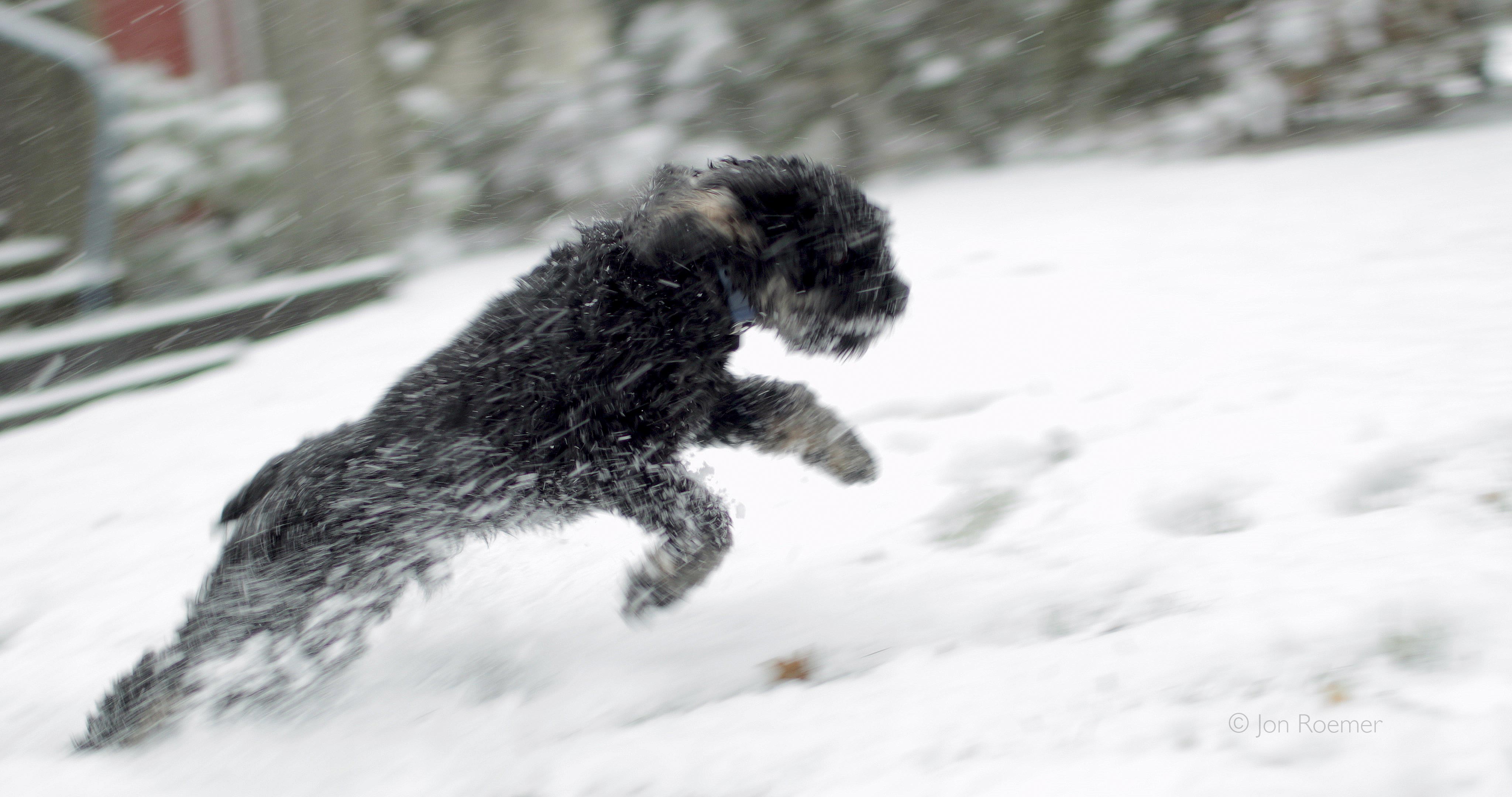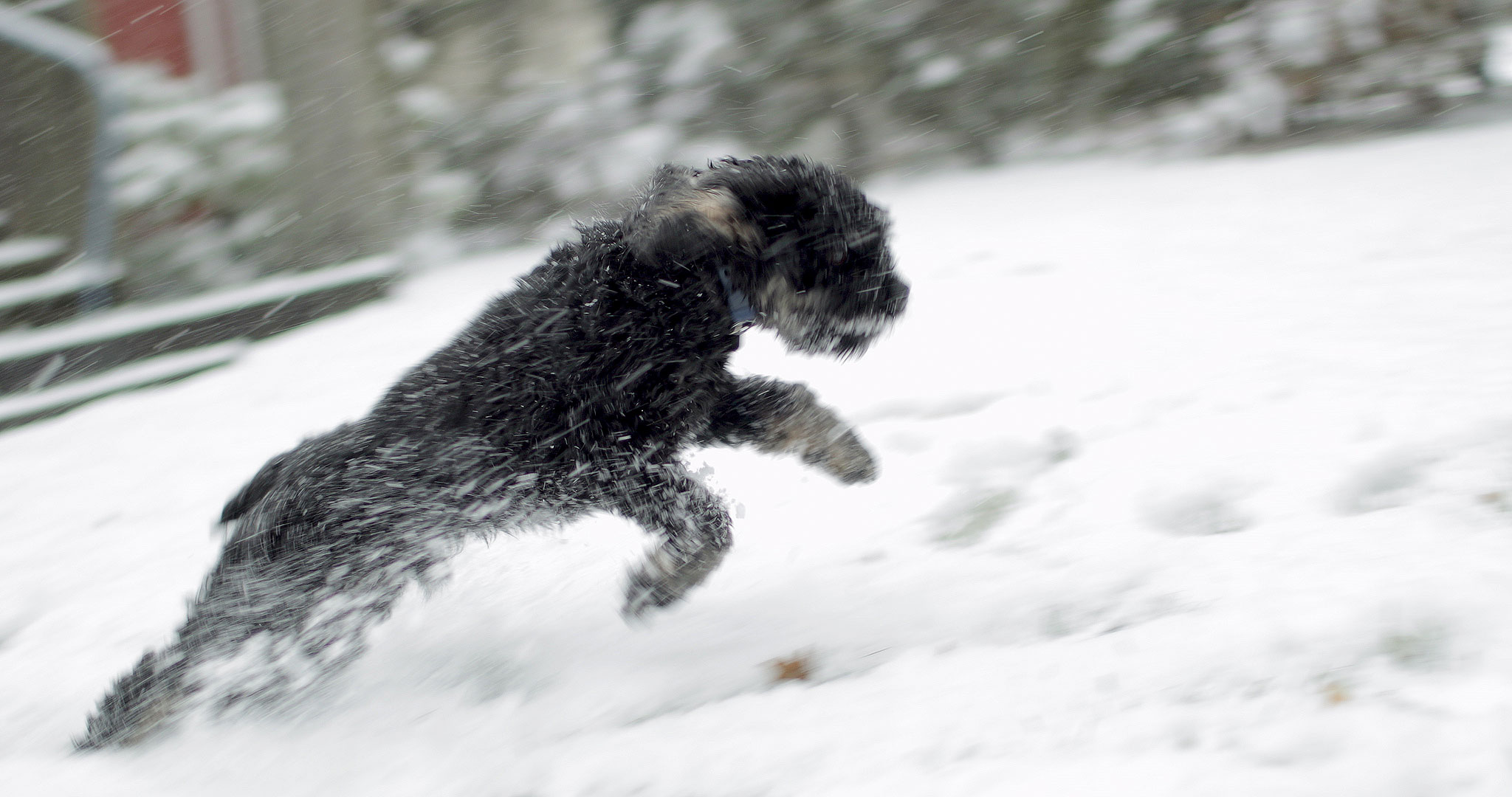A snow day is usually a testing day and my most willing subject is often my sidekick Caesar (“The best subject is the one you have with you.” Well, um, something like that…) So, I set out on Saturday to follow Caesar and to push my Canon 1DX Mark II to its limits – using its Dual-Pixel Auto Focus in video mode on a f/1.4 lens wide open in low contrast light.
To complicate things further, I shot most of the footage with the camera knee-high and thus with no way to see directly into the display. The 1DX Mark II does not have a tilting screen.
How Many Breaks, seen above, is the result. Obviously, not perfect on the focus front but still pretty amazing given the circumstances.
I shot with the 1DX Mark II in 4K DCI 60p mode. 1/125 shutter and with the lens between f/1.4 and f/1.6. The bulk of the shots were at f/1.4. ISO was at 100 for most of the clips but a few were at ISO 160. The lens used was a EF 35mm f/1.4L (Mark I) with a B+W .6 ND filter.
The camera was set to Neutral Picture mode with Sharpness at 0, Contrast at -4, and Saturation at -2. I shot everything handheld knowing that I was going to conform the 60p to 23.98 in post, creating slow-motion, and in the process the camera movement would smooth out.
One thing to keep in mind is that the focus speed in the video is in slow-motion. The focus racks and locking-on or lack thereof would be two-and-a-half times faster in real life.
For a point of comparison, I filmed Caesar in 2015 doing the same thing:
It’s not apples to apples. Snow Falling on Caesar was shot on a Canon C300 with the EF 16-35mm f/4L IS lens at f/4. That’s three more stops of depth of field than in How Many Breaks. Snow Falling on Caesar was also shot in 1080 HD (1920 x 1080) while How Many Breaks was shot in 4K DCI (4096 x 2160). The former will make focus issues harder to detect. Plus, it was brighter, more contrasty light when I shot Snow Falling on Caesar and because of the C300’s adjustable monitor I could see where the camera was pointed at all times. All the better the track my subject.
Take from the comparison what you will. The C300 clearly has more dynamic range and can handle the snow vs. Caesar better (the advantage of having a Log mode). Its focus is more consistent but for the reasons I outline above I would describe the outcomes as examples of different working methods more than different results from the same working scenario.
In How Many Breaks there are points where the snow is clipping or on the verge of it. That’s a negative to the 1DX Mark II’s video mode, it doesn’t have a Log codec. It has no headroom or recovery of highlights. But the flip side to that, one of the 1DX Mark II’s strengths, is its build quality. It is practically waterproof. It handles a light to medium rain or a steady snow with ease. To film in the same conditions with the C300 is much harder. The need for a rain cover makes it more cumbersome and that makes it harder to react to or follow a subject.

An additional note: it is helpful to have a cage for your DSLR when shooting video in conditions like this. It gives you more grip points and more flexibility. I added a Wooden Camera cage to the 1Dx Mark II when filming yesterday. Having a top handle made it possible to hold the camera lower as I followed Caesar and the cage’s vertical bar gave a me second point of contact when the camera was closer to eye-level.

Here’s a frame grab from How Many Breaks:

How Many Breaks is also on my YouTube Channel.
